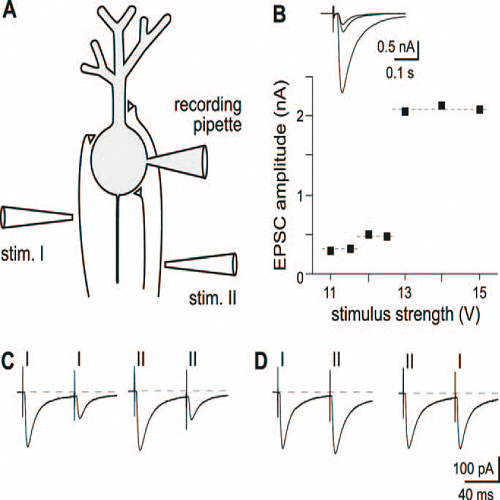Laurens W. J. Bosman, Hajime Takechi, Jana Hartmann, Jens Eilers,
Arthur Konnerth
J. Neurosci.,
2008,
28 (4), 798-807 published on 23.01.2008
The Journal of Neuroscience,
online article
During the developmental formation of neuronal circuits, redundant synapses are eliminated and persisting synapses strengthened. In the immature cerebellum, climbing fiber–Purkinje cell synapses undergo a pronounced synaptic rewiring, from a multiple innervation around birth to a mono-innervation in adults. An early stage of this process consists in the differentiation of initially equally strong synapses into one “large” and several “small” synaptic inputs. By performing whole-cell recordings in Purkinje cells of rat cerebellar slices, we found that the coincident activation of a Purkinje cell and one of its afferent climbing fibers induces homosynaptic long-term synaptic potentiation (LTP). This LTP requires postsynaptic Ca2+ signaling and involves an increase in the single channel conductance of the postsynaptic AMPA receptors. Interestingly, LTP occurs exclusively at large synaptic inputs. It is not observed at small inputs that are eventually eliminated. Thus, we identified a new form of LTP that is expressed uniquely and just for a restricted period of early development in the large climbing fiber inputs. Our results suggest that this LTP mediates the activity-dependent maturation of the “winner” climbing fiber.









